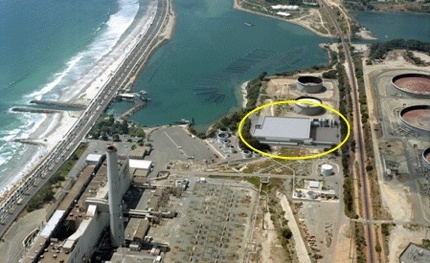In the April 16, 2008 edition of the Los Angeles Times, Peter MacLaggan, Senior Vice President of Poseidon Resources Corp., (the company that hopes to put in “the largest and most technologically advanced [desalination plant] in the Western Hemisphere”) in our lagoon has written an Op-ed piece titled From Sea To Tap, as a response to Mindy McIntyre’s Op-Ed of April 10, 2008 titled The SUV of Water.
California’s water supply system is based largely on pumping water from environmentally sensitive watersheds in Northern California and the Colorado River over hundreds of miles to Southern California through an elaborate and costly network of dams, canals and reservoirs. But proven desalination technology now allows us to produce higher-quality water along the coast, where the majority of the state’s population resides, at a comparable cost and without damaging the environmentally sensitive upstream habitats.
No matter what you think about the Carlsbad desalination factory, both of these opinions are good reading.
[Link: LA Times]

Several news articles on seawater desalination reveal that desalination technology is little understood by most journalists, local water managers, politicians and environmental groups. In searching for renewable potable water or supplementing current sources few are aware that there is more than one desalination technology.
When evaluating a desalination project Reverse Osmosis is typically the process considered. Yet, there is a viable and proven alternative in distillation with lower costs.
The Advanced Vapor Compression Desalination Process is an advanced and highly environmentally friendly desalination process, an alternative, single performance, and lower maintenance process compared to Reverse Osmosis. The system is based on proven flash distilling principles but features an innovative, highly efficient, and compact design.
Additionally, it offers a unique advantage in the treatment of salt byproducts.
The system produces outputs of either valuable crystalline salt or concentrated brine. The
process is optimized for the desalination of seawater drawn from wells below the sea floor and not returning the brine to the sea. The process has modular abilities and can be expanded to meet future requirements in water demand or designed and built at the start for higher volume. A basic plant design can operate on solar, thermal, nuclear or traditional energy sources. Each unit is optimized from an initial engineering site study to account for different environmental and structural needs. A basic stand-alone unit of 1 acre-foot per day has a footprint of approximately twenty feet in diameter. The larger the plant water volume the lower the cost is per acre-foot. The plant energy consumption is on the order of about 4 to 20 kw per1000 gallons produced based on the design, volume produced and type of energy.
The system can also be used in industrial treatment and recovery of effluent water. The life cycle of the plant is based on a 25 year time line which can be extended through proper preventable maintenance and overhaul.
Comments on this entry are closed.